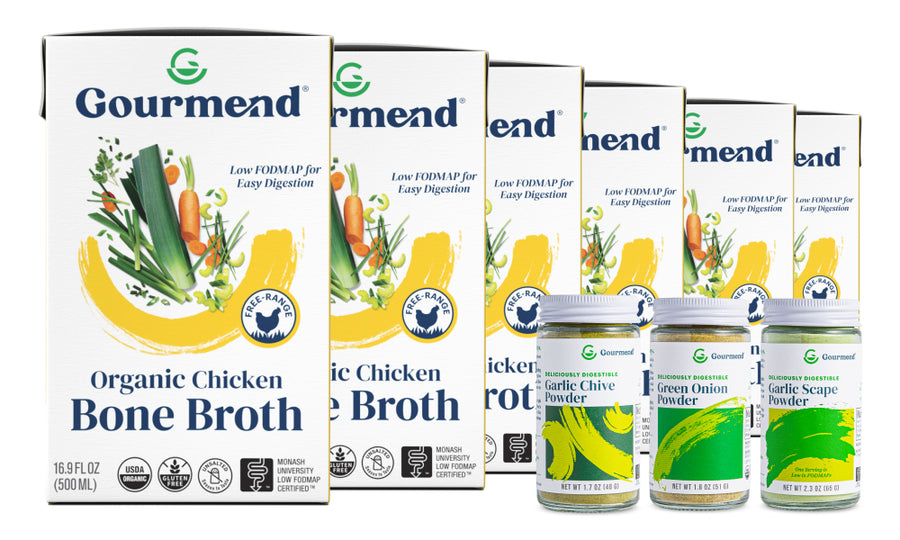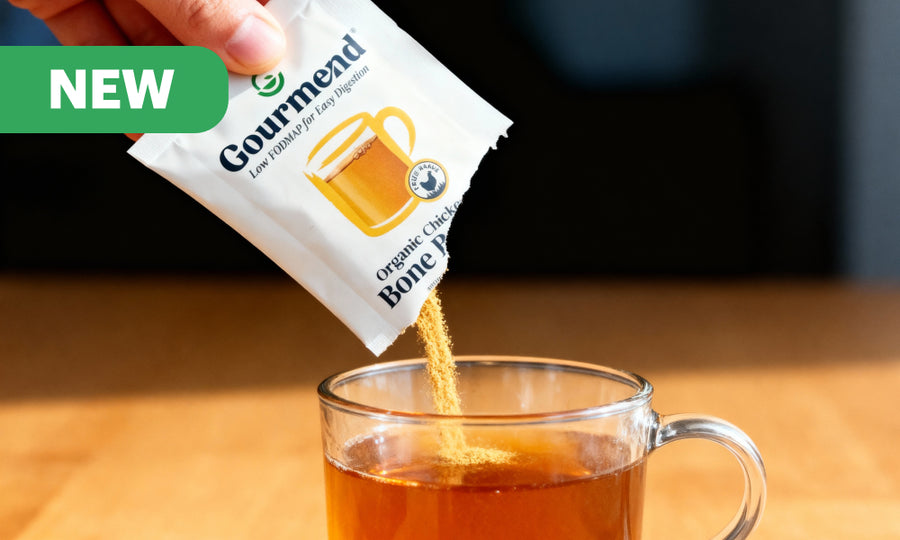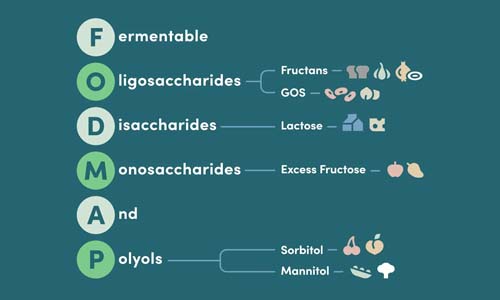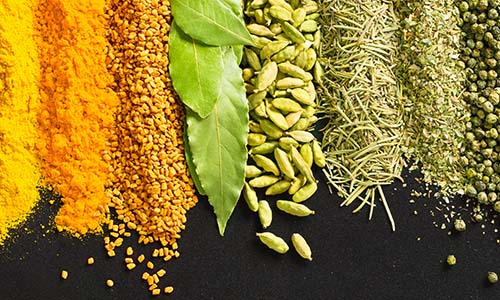Zucchini FODMAP: Safe Portions & Gourmet Recipes
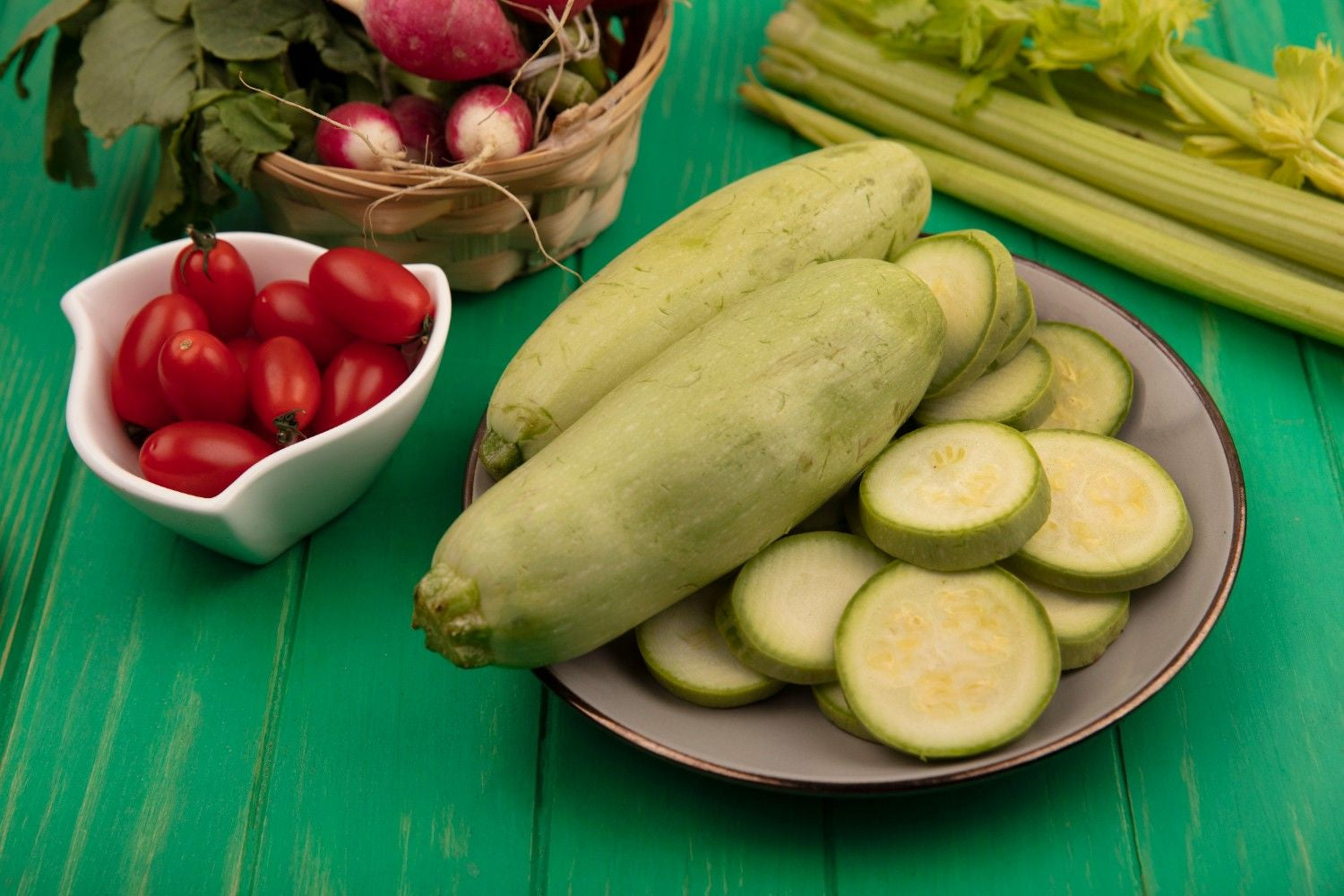
Key Takeaways
- Zucchini is a versatile summer squash that offers a crisp texture and mild flavor.
- It is generally gentle on sensitive digestive systems when consumed in appropriate portions.
- Understanding safe portion sizes is essential for keeping zucchini low FODMAP friendly.
- Zucchini can be a reliable ingredient for those managing IBS through the low FODMAP diet.
Table of Contents
- Zucchini & the Low FODMAP Diet: Your Guide to Safe Portions and Bold Flavors
- The Science Behind Zucchini's FODMAP Status
- Zucchini vs. Other Low FODMAP Vegetables
- Best Low FODMAP Zucchini Recipes, Bold Flavor, Zero Guesswork
- FODMAP Serving Size Comparison Table, Zucchini & Beyond
- Zucchini Intolerance, Solving the Mystery When "Safe" Foods Trigger Symptoms
Zucchini & the Low FODMAP Diet: Your Guide to Safe Portions and Bold Flavors
Living with IBS means mastering the art of ingredient intelligence, and zucchini stands as one of your most reliable culinary allies. This versatile summer squash delivers crisp texture and mild flavor while staying gentle on sensitive digestive systems, provided you understand the portion rules that keep it in the safe zone. For a deeper dive into the specifics, see is zucchini low FODMAP for more details on how zucchini fits into the low FODMAP diet.
The key to enjoying zucchini fodmap success lies in precise portioning. At 65g (⅓ cup cooked), zucchini remains firmly low FODMAP, but just a few extra slices can tip it into moderate territory. We'll show you exactly how to measure, cook, and savor zucchini in ways that maximize both flavor and digestive comfort, plus share gourmet recipes that prove low FODMAP eating is anything but restrictive. If you're looking for more inspiration, check out these low FODMAP recipes to expand your meal options.
The Science Behind Zucchini's FODMAP Status

What Are FODMAPs and How Do They Impact Digestion?
FODMAPs, fermentable oligosaccharides, disaccharides, monosaccharides, and polyols, are short-chain carbohydrates that resist digestion in the small intestine. When these compounds reach your colon, gut bacteria ferment them rapidly, producing gas and drawing water into the intestines. For people with IBS, this process triggers bloating, cramping, and digestive discomfort.
Zucchini contains primarily fructans and small amounts of fructose, but in much lower concentrations than notorious high-FODMAP vegetables like onions or garlic bulbs. This lower FODMAP load explains why properly portioned zucchini rarely triggers symptoms, making it a staple in gut-friendly cooking. For a comprehensive list of other vegetables that are suitable, see low FODMAP vegetables for more options.
Zucchini's FODMAP Breakdown, Serving Size Is Everything
Monash University research establishes 65g (⅓ cup cooked) as zucchini's safe serving threshold. FODMAP Friendly laboratories suggest slightly higher tolerances in some testing, but these variations reflect different testing methodologies rather than conflicting data. The conservative 65g limit ensures consistent digestive comfort across diverse gut sensitivities.
Zucchini's primary FODMAPs include fructans and excess fructose, which accumulate as portion sizes increase. While 65g keeps these compounds well below triggering levels, portions of 100g or more can push sensitive individuals into symptom territory, demonstrating why precision matters more than guesswork.
| Portion Size | FODMAP Status | Typical Symptoms | Recommendation |
|---|---|---|---|
| 65g (⅓ cup cooked) | Low FODMAP | None expected | Safe for daily use |
| 70-90g | Moderate FODMAP | Mild bloating possible | Occasional use only |
| 100g+ | High FODMAP | Bloating, cramping likely | Avoid during elimination |
Zucchini vs. Other Low FODMAP Vegetables
Comparing Zucchini, Eggplant & Yellow Squash
When evaluating eggplant fodmap status alongside zucchini, eggplant offers a more generous serving allowance at 80g per portion, with a denser, meatier texture that absorbs flavors beautifully. Yellow squash mirrors zucchini's 65g limit but brings slightly sweeter notes, making it excellent for both savory and subtly sweet applications.
For those wondering is yellow squash low fodmap, the answer is yes, with identical portion guidelines to zucchini. Both summer squashes share similar FODMAP profiles and cooking versatility, though yellow squash tends to hold its shape better in longer-cooked dishes like stews and casseroles.
Why Raw vs. Cooked Matters
Cooking doesn't significantly alter zucchini's FODMAP content, but it does break down fiber structures that can ease digestion for sensitive stomachs. Gentle steaming or light sautéing in olive oil with chive sprigs creates the most gut-friendly preparation, while raw zucchini in salads remains safe within the 65g limit.
Best practices include removing excess moisture after cooking to prevent soggy textures, seasoning with low FODMAP herbs like chives or green leek tops instead of garlic bulbs, and pairing with easily digestible grains like rice or quinoa for balanced meals.
Best Low FODMAP Zucchini Recipes, Bold Flavor, Zero Guesswork
Oven & Stovetop Classics
Transform your zucchini fodmap portions into crowd-pleasing dishes with these tested favorites. Our Zucchini & Rice Slice uses exactly 65g of shredded zucchini per serving, combined with jasmine rice and fresh chive sprigs for that essential savory depth. The slice freezes beautifully for up to three months, making it perfect for meal prep without the guesswork of portion control.
For sweet applications, Gluten-Free Zucchini Bread showcases zucchini's moisture-retaining properties while staying within safe FODMAP limits. Use 80g of finely grated zucchini per standard loaf (yielding 8 slices), and enhance flavor with green leek tops sautéed until fragrant. The key is removing excess moisture from grated zucchini before mixing, press between paper towels for 10 minutes to prevent soggy textures. For a savory breakfast, you might also enjoy the ultimate low FODMAP frittata as another delicious low FODMAP option.
Zucchini in Soups, Sauces & Chowders
Build restaurant-quality soups using Gourmend shelf-stable broth cartons as your flavor foundation. Our Summer Vegetable Garden Soup combines 65g zucchini with carrots and green beans, using Gourmend's vegetable broth that naturally includes nori seaweed and oyster mushrooms for umami complexity, no garlic bulbs needed.
The Eggplant-Zucchini Tomato Pasta Sauce balances both vegetables within safe serving sizes: 65g zucchini and 65g eggplant per portion. Since canned tomatoes are low FODMAP up to ½ cup, this sauce delivers maximum flavor while respecting digestive boundaries. Store in portions using ice cube trays, each cube equals one safe serving for quick weeknight meals.
Gourmend's umami-building approach: Our broths use chives, scallion greens, and leek greens for onion-like depth, plus nori and mushrooms for savory complexity. This means your soups taste rich and layered without relying on high-FODMAP aromatics that trigger symptoms.
Zucchini as a Snack or Side, Super Simple Combos
Roasted zucchini "fries" become addictive when cut into uniform strips, tossed with olive oil and fresh chive sprigs, then roasted at 425°F until golden-edged. Each 65g portion (about half a small zucchini) provides satisfying crunch without the digestive aftermath of traditional fried foods.
For entertaining, create low FODMAP veggie platters featuring zucchini ribbons alongside carrot sticks and red bell pepper strips. Pair with herb-infused olive oil made from green leek tops and fresh herbs, a sophisticated alternative to garlic-heavy dips that keeps guests comfortable and coming back for more.
FODMAP Serving Size Comparison Table, Zucchini & Beyond

Understanding portion thresholds across popular vegetables helps you build balanced, symptom-free meals. This comparison reveals why zucchini fodmap guidelines matter, and how other favorites stack up for meal planning success.
| Vegetable | Low FODMAP Serve | Moderate Limit | Primary Uses | Flavor Profile |
|---|---|---|---|---|
| Zucchini | 65g (⅓ cup cooked) | 130g triggers symptoms | Breads, soups, zoodles | Mild, versatile, moisture-rich |
| Eggplant | 65g (⅓ cup cooked) | 90g moderate FODMAP | Roasting, Mediterranean dishes | Creamy, absorbs flavors well |
| Carrots | 65g (½ cup cooked) | No upper limit established | Soups, roasting, raw snacks | Sweet, earthy, reliable |
| Green Beans | 75g (15 beans) | 150g becomes moderate | Stir-fries, salads, sides | Crisp, fresh, mineral notes |
| Red Bell Pepper | 65g (½ medium) | 130g triggers issues | Raw, roasted, sauces | Sweet, vibrant, crunchy |
| Tomatoes (canned) | 100g (½ cup) | 200g becomes problematic | Sauces, soups, bases | Acidic, umami-rich, foundational |
| Vegetable | Low FODMAP Serving | Moderate Limit | Best Culinary Uses | Gourmet Pairings |
|---|---|---|---|---|
| Zucchini | 65g (⅓ cup cooked) | 130g | Zoodles, bread, fritters | Chive sprigs, lemon, fresh herbs |
| Eggplant | 65g (⅓ cup cooked) | 100g | Roasting, pasta sauce, dips | Tomatoes, green leek tops, olive oil |
| Carrots | 65g (½ cup cooked) | 120g | Roasting, soups, raw snacks | Ginger, scallion greens, honey |
| Green Beans | 75g (15 beans) | 150g | Steaming, stir-fries, salads | Almonds, lemon zest, chives |
| Red Bell Pepper | 65g (½ cup) | 100g | Raw, grilling, stuffing | Basil, balsamic, goat cheese |
| Bok Choy | 70g (1 cup chopped) | 140g | Stir-frying, soups, steaming | Ginger, sesame oil, rice vinegar |
| Tomatoes (canned) | 100g (½ cup) | 200g | Sauces, soups, pasta | Fresh herbs, olive oil, lemon |
This comparison reveals why portion precision matters across all vegetables, not just zucchini fodmap servings. Notice how similar serving sizes create consistent meal-planning strategies, most vegetables hover around 65-75g for safe portions, making it easier to build balanced plates without constant recalculation. For more on how FODMAP stacking can affect your tolerance, see this Monash University resource on FODMAP stacking.
Zucchini Intolerance, Solving the Mystery When "Safe" Foods Trigger Symptoms
Why Zucchini Might Still Cause Issues
Personal FODMAP thresholds vary significantly from laboratory averages. While Monash University establishes 65g as universally safe, your individual tolerance might be lower due to gut microbiome differences, stress levels, or concurrent health conditions affecting digestion. For more on IBS and its management, visit the NHS resource on irritable bowel syndrome (IBS).
FODMAP stacking creates the most common issues. Combining zucchini with other moderate-FODMAP foods, like ¼ cup lentils plus tomato sauce, can push your total FODMAP load beyond comfort levels, even when each ingredient stays within "safe" ranges individually.
Fiber sensitivity compounds the problem. Zucchini contains both soluble and insoluble fiber, and some people with IBS experience symptoms from fiber content regardless of FODMAP status. This explains why cooked zucchini often feels gentler than raw preparations.
Real-World Troubleshooting Steps
Start with systematic portion reduction. If 65g causes discomfort, try 40g for one week while maintaining a detailed symptom diary. Note timing, accompanying foods, stress levels, and symptom severity on a 1-10 scale.
Eliminate zucchini completely for 7-10 days if reduction doesn't help. This reset period allows your gut to calm while you identify whether zucchini is the true culprit or part of a larger pattern involving multiple foods.
Reintroduction protocol: After elimination, reintroduce zucchini at 30g servings every other day. Gradually increase by 15g increments until you identify your personal threshold. This methodical approach prevents overwhelming your system while building confidence in your limits.
If You Accidentally Overdo It, What Next?
Immediate relief strategies focus on gentle movement and hydration. Take a 10-minute walk to encourage natural gut motility, and sip room-temperature water or peppermint tea to ease cramping. Avoid lying flat, which can worsen bloating sensations.
For next-day recovery, choose easily digestible foods like plain rice, bone broth, or bananas. Gourmend's shelf-stable chicken broth provides gentle nourishment without additional FODMAP burden, helping restore normal digestion patterns.
Quick Recovery Protocol: If zucchini overdose causes symptoms, drink 16oz water immediately, walk for 10 minutes, then rest upright. Choose simple foods for the next 24 hours and consider using our recipe conversion tool to find gentler alternatives.
Frequently Asked Questions
What is the recommended safe portion size of zucchini for someone following a low FODMAP diet?
The recommended safe portion size of zucchini on a low FODMAP diet is up to 65 grams (about ½ cup cooked). Staying within this portion helps keep zucchini low FODMAP and gentle on digestion.
How do the FODMAP components in zucchini affect people with IBS compared to other vegetables?
Zucchini contains lower levels of fructans and fructose compared to high FODMAP vegetables like onions or garlic, making it less likely to trigger IBS symptoms when eaten in appropriate portions. Its mild FODMAP load makes it a reliable choice for sensitive digestive systems.
Why is portion control important when consuming zucchini on a low FODMAP diet?
Portion control is key because eating zucchini beyond 65 grams can increase oligosaccharides, which may ferment in the gut and cause digestive discomfort. Keeping portions precise ensures zucchini remains a flavorful, gut-friendly ingredient.
What symptoms might occur if someone with IBS eats more than the recommended amount of zucchini?
Consuming more than the safe portion of zucchini can lead to symptoms like bloating, cramping, and gas due to the fermentation of excess FODMAPs in the colon. These effects highlight the importance of mindful serving sizes for digestive comfort.
